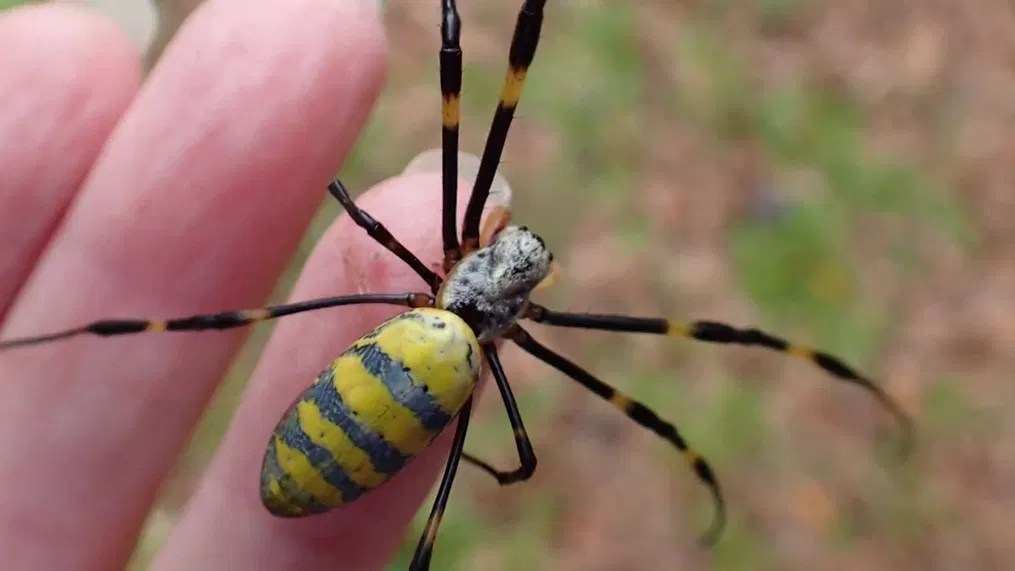In recent years, the phenomenon of flying spiders in New York has captured the attention of residents and experts alike. With their unusual behaviors and eye-catching appearance, these creatures have raised questions and concerns among the public. The term "flying spiders" often creates a sense of intrigue, but it is essential to understand what they really are and the implications of their presence in urban settings like New York City.
As we delve deeper into the world of flying spiders, we will explore their characteristics, their impact on the ecosystem, and the myths surrounding them. This article aims to provide comprehensive information to educate residents and visitors about these fascinating arachnids, ensuring that you can appreciate their role in nature without unnecessary fear.
Join us as we uncover the truth behind flying spiders in New York, from their biology to their behavior, and how to coexist with them safely. Whether you're a curious resident or a concerned parent, this article will equip you with the knowledge you need about these intriguing creatures.
Table of Contents
- What Are Flying Spiders?
- Common Species of Flying Spiders in New York
- Habitat and Behavior
- Impact on the Ecosystem
- Myths and Misconceptions
- How to Safely Coexist with Flying Spiders
- When to Seek Help
- Conclusion
What Are Flying Spiders?
Flying spiders are not a distinct species but rather a term used to describe certain spider species that can glide or travel through the air. The phenomenon is often attributed to the ability of some spiders to use silk threads to catch the wind and float away. This behavior is known as "ballooning." While it may appear that these spiders are flying, they are actually using air currents to travel.
The Science Behind Ballooning
Ballooning is a fascinating survival strategy used by many spider species. Here’s how it works:
- Spiders produce silk threads that can extend several feet.
- They release these threads into the air, allowing them to catch the wind.
- Once airborne, they can be carried over long distances, sometimes up to several miles.
This method not only helps spiders find new habitats but also aids in dispersing their population, which is essential for their survival.
Common Species of Flying Spiders in New York
While many spider species can exhibit ballooning behavior, a few are more commonly observed in New York. Here are some of the most notable:
1. Wasp Spider (Argiope aurantia)
The Wasp Spider is known for its striking yellow and black coloration. This spider is typically found in gardens and fields, where it weaves large, intricate webs. During warm months, it may balloon to new locations.
2. Garden Spider (Araneus diadematus)
This species is often recognized by its distinctive cross pattern on its abdomen. The Garden Spider is commonly found in backyards and parks, and like the Wasp Spider, it can also balloon during favorable weather conditions.
3. Common House Spider (Parasteatoda tepidariorum)
The Common House Spider is frequently found indoors and in urban settings. While they do not typically balloon, they can travel short distances through windows and doors.
Habitat and Behavior
Flying spiders can adapt to various environments, from urban landscapes to rural areas. They prefer habitats with abundant vegetation, as it provides shelter and hunting grounds.
Behavioral Patterns
These spiders are primarily nocturnal, hunting at night and resting during the day. Their ballooning behavior usually occurs in late summer and early fall when environmental conditions are just right.
Impact on the Ecosystem
Flying spiders play a crucial role in the ecosystem. They are natural predators, helping to control insect populations. This predatory behavior is vital for maintaining a balanced ecosystem, especially in urban areas where pests may thrive.
Benefits of Spiders in Urban Areas
- Reduction of pest populations, such as flies and mosquitoes.
- Contribution to biodiversity, which is essential for healthy ecosystems.
- Providing food for larger predators, like birds and small mammals.
Myths and Misconceptions
Despite their ecological importance, spiders often face misconceptions that lead to undue fear.
Common Myths
- All spiders are dangerous: Most spiders are harmless and do not pose a threat to humans.
- Flying spiders can attack: Flying spiders do not seek out humans; they are more focused on survival and finding food.
How to Safely Coexist with Flying Spiders
Understanding how to coexist with flying spiders can help reduce fear and promote a healthy environment.
Tips for Coexistence
- Keep outdoor lights turned off at night to reduce insect attraction.
- Seal cracks and gaps in your home to prevent spiders from entering.
- Maintain gardens and yards to discourage large spider populations.
When to Seek Help
If you encounter a spider that you cannot identify or feel uncomfortable with, it's best to consult a pest control professional. They can provide guidance on safe removal and identification.
Conclusion
In summary, flying spiders in New York are fascinating creatures that play essential roles in our ecosystem. Understanding their behaviors and habitats can help alleviate fears and promote a better coexistence. If you have further questions or experiences with flying spiders, feel free to leave a comment below or share this article with others who may benefit from the information.
Thank you for reading! We hope to see you back for more insightful articles on intriguing topics like this one.
You Might Also Like
Brittany Renner's Dating History: A Comprehensive LookThe Jonas Brothers Height: A Complete Guide
Kid Rock's Upcoming Tours: Everything You Need To Know
Keith Ledge: A Comprehensive Look At The Life And Career Of An Influential Figure
Who Plays Peta? Exploring The Character And The Actor Behind The Role
Article Recommendations
- Candidteensnet
- Archie And Lilibet Photos 2024
- Samantha Sloyan Partner
- Desmond Doss
- Kyle Baugher
- Desmond Doss
- Adrianne Padalecki
- Folake Olowofoyeku Relationships
- Whitney Houston Brother Michael Died
- Daisy Melanin Origin


